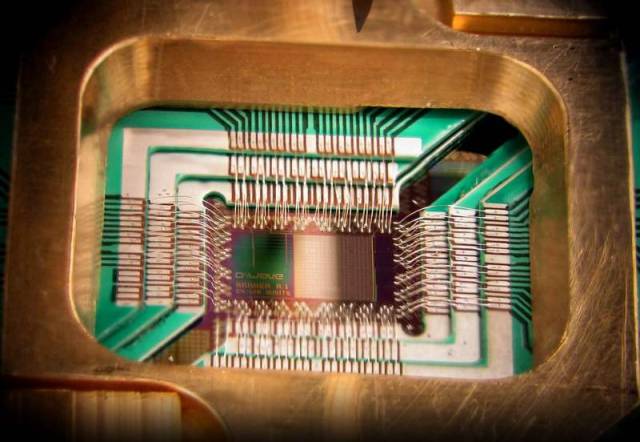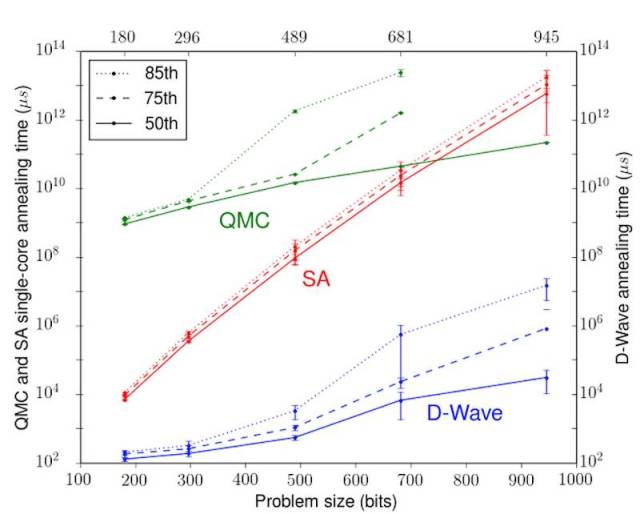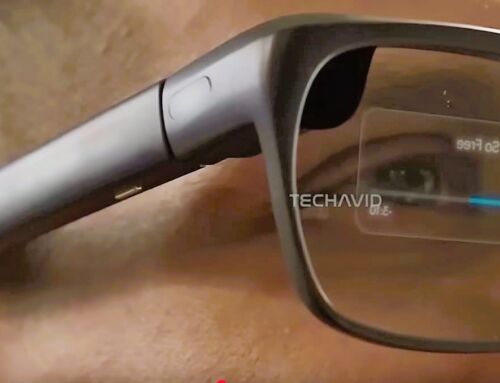Google‘s Quantum Computer actually works and could be 3,600 times faster than a supercomputer.
A team of researchers from Google’s Quantum AI team, during the last two years, has made progress in understanding the physics governing quantum annealers.
Above: Photograph of a chip constructed by D-Wave Systems Inc., mounted and wire-bonded in a sample holder. The D-Wave processor is designed to use 128 superconducting logic elements that exhibit controllable and tunable coupling to perform operations. Credit wikimedia
Now the team claims that its D-Wave quantum computer really works, reaching the astonishing speed of 3,600 times faster than a supercomputer.
“We recently applied these new insights to construct proof-of-principle optimization problems and programmed these into the D-Wave 2X quantum annealer that Google operates jointly with NASA.
The problems were designed to demonstrate that quantum annealing can offer runtime advantages for hard optimization problems characterized by rugged energy landscapes.”
Quantum annealing (QA) has been proposed as a quantum enhanced optimization heuristic exploiting tunneling. Here, we demonstrate how finite range tunneling can provide considerable computational advantage. For a crafted problem designed to have tall and narrow energy barriers separating local minima, the D-Wave 2X quantum annealer achieves significant runtime advantages relative to Simulated Annealing (SA). For instances with 945 variables this results in a time-to-99\%-success-probability that is ∼108 times faster than SA running on a single processor core.
Time to find the optimal solution with 99% probability for different problem sizes. We compare Simulated Annealing (SA), Quantum Monte Carlo (QMC) and D-Wave 2X. Shown are the 50, 75 and 85 percentiles over a set of 100 instances. We observed a speedup of many orders of magnitude for the D-Wave 2X quantum annealer for this optimization problem characterized by rugged energy landscapes. For such problems quantum tunneling is a useful computational resource to traverse tall and narrow energy barriers. Credit Google
source Google






Leave A Comment